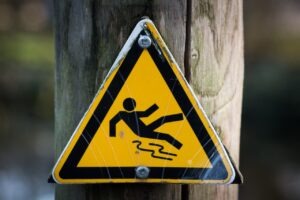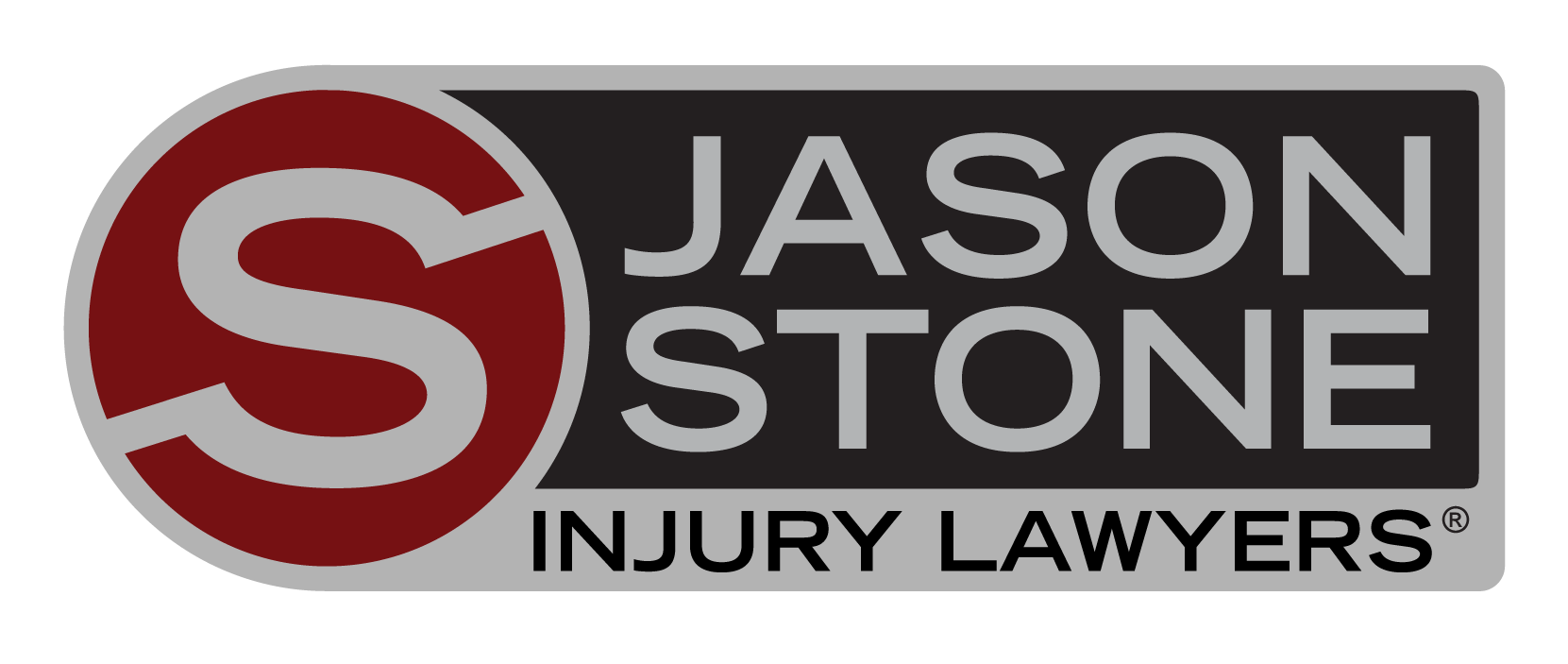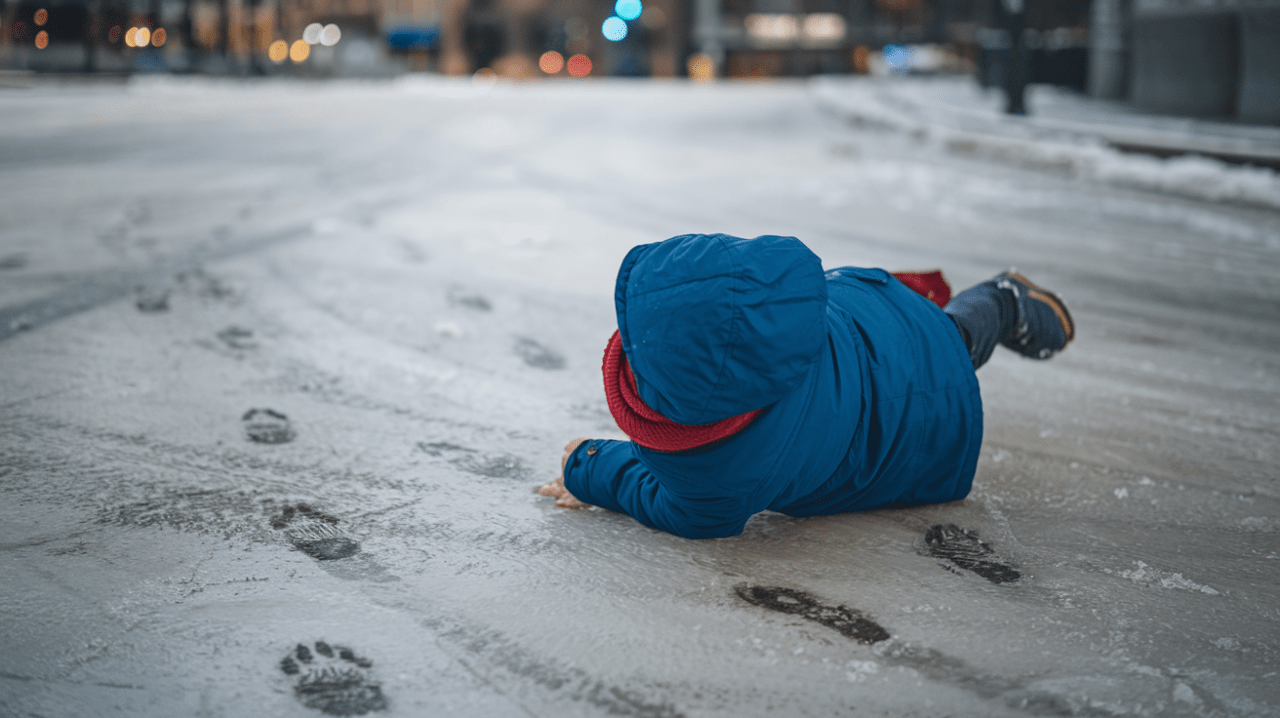 As its name implies, a slip and fall case is a lawsuit you file against a property owner after you slip, trip or fall on his or her premises and suffer an injury because of it. Before getting into how to calculate your damages, including those for pain and suffering, let’s look at premises liability in more detail.
As its name implies, a slip and fall case is a lawsuit you file against a property owner after you slip, trip or fall on his or her premises and suffer an injury because of it. Before getting into how to calculate your damages, including those for pain and suffering, let’s look at premises liability in more detail.
Premises Liability In a Nutshell
It should come as no surprise to you that a property owner can be held liable for accidents and injuries that occur on his or her property. This is what the law of premises liability is all about. It doesn’t just cover slip–and-fall accidents, but also such things as:
- Swimming pool accidents
- Dog bites
- Poor or nonexistent nighttime lighting
- Instances of inadequate security
Slip-and-Fall Injuries
Unfortunately, a slip-and-fall accident can cause severe injuries, including:
- Broken bones, particularly in your arms, legs, hips and shoulders
- Serious cuts and lacerations
- Muscle and ligament tears
- A spinal cord injury that could leave you paralyzed
- A traumatic brain injury that could disable you for life
- Internal injuries
Duty of Care
The duty of care that a property owner owes you is that of reasonable care to keep his or her property safe for all visitors, be they invitees or social guests. Sometimes this duty extends to trespassers as well, especially if the property owner knows that children or other trespassers frequently access his or her property.
This duty of care means that the property owner must replace or repair such things as:
- A damaged or leaking roof
- A damaged sidewalk or parking lot
- A damaged or leaking toilet or water heater
- A faulty electrical system
- A faulty plumbing system
- A faulty HVAC system
Furthermore, it means that he or she must remove snow and ice from the property’s sidewalks and parking lot as soon as reasonably possible.
It also means that the property owner must warn visitors of any hazards on the property, either by putting up a warning sign or a barrier around the hazard.
In certain situations, such as in a shopping strip or mall where store owners lease their property, the duty of care is that of the lessee rather than the owner.
Elements of Proof
When you sue a property owner for injuries you sustained in a slip-and-fall or other accident on his or her premises, you almost always proceed under the theory of negligence. In other words, your claim is not that the property owner deliberately hurt you, but rather that something he or she did or failed to do led to the accident that caused your injuries.
To win your lawsuit, you will need to present clear and convincing evidence of the following:
- That the property owner owed you a duty of care
- That he or she breached that duty in some way
- That you sustained injuries as a result of the breach
- That the plaintiff’s breach of duty was the proximate cause of your accident and therefore your injuries
- That these injuries resulted in compensatory damages for which the defendant is liable
Bolstering Your Evidence
To bolster your evidence, you likely will want to do the following as soon as possible after your accident:
- Take pictures of the scene showing the hazard that caused your slip-and-fall accident
- Try to locate any witnesses who saw what happened and get their contact information
- Notify the property owner of your accident and injuries
- File an accident report with the local police department
- Obtain ownership records of the property to prove who owns it
- Keep close track of your medical bills and records related to your accident
- Collect your tax returns and pay stubs that prove how much money you lost while in the hospital or at home recovering from your accident
Statute of Limitations
If your injuries occurred in Massachusetts, the statute of limitations mandates that you bring your premises liability lawsuit within three years of the date on which your slip-and-fall accident occurred. If you miss this all-important filing deadline, the judge likely will dismiss your case as time-barred.
Modified Comparative Negligence
Massachusetts is a modified comparative negligence state. What this means is that the property owner you sue may attempt to accuse you of contributing to your accident by such allegations as:
- You failed to pay sufficient attention to where you were walking.
- You were wearing shoes or other footwear inappropriate to the circumstances.
- You should have seen and avoided the obvious hazard.
If the defendant raises such an affirmative defense, the jury must look at all evidence, both yours and the defendant’s, regarding what caused your accident. If the jurors determine that your own negligence was partially to blame, they then must assign a responsibility percentage to you and the property owner. Assuming that your percentage is 50% or less, you can still recover damages. The jury will, however, reduce the amount of your damages by your percentage of responsibility.
As an example, suppose the jury places a value of $100,000 on your damages, but also finds that you were 25% responsible for the accident. It would therefore award you only $75,000 in damages as opposed to the full award.
Calculating Your Damages
When you file a slip-and-fall lawsuit, you ask for two types of damages: economic and noneconomic.
Economic Damages
Your economic damages are easy to calculate because they are the costs for which you have bills, such as for:
- Hospital expenses
- Prescription drug expenses
- Follow-up doctors’ appointments and treatment
- Physical therapy expenses
- Medical equipment, like a pair of crutches, walkers, etc.
Your economic damages also include your loss of wages during your hospitalization and at-home recovery. This is where your pay stubs and tax returns come in handy as proof of the amount you lost.
Also keep in mind that your economic damages include not only those you have already accumulated, but also those you can reasonably expect to have in the future.
Noneconomic Damages
Your noneconomic damages are considerably more difficult to calculate because they are subjective. They include such things as:
- Your physical, mental and emotional pain and suffering
- Your embarrassment over your lingering scars
- Your loss of identity if your injuries require you to now use a wheelchair or other mobility aid
- Your loss of ability to lead the fully active life you did before your accident
- Your overall loss of enjoyment in your life
Numerous factors go into calculating the dollar value of these damages, including:
- The types of physical pain you suffered or still suffer
- The types of mental pain you suffered or still suffer, such as PTSD, fear, anxiety, depression, anger, humiliation, etc.
- Its severity
- The length of time it lasted or is reasonably expected to last
- Your age at the time of your accident
Experts recommend that you keep a daily pain log noting your amount of pain, its types, how it affects you and how it has changed your lifestyle.
Finding the Right Slip-and-Fall Lawyer
If all of the above seems exceptionally complicated to you, that’s because a slip-and-fall injury and its aftermath can indeed become quite complicated quite quickly. That’s where Jason Stone Injury Lawyers comes in. We practice only personal injury law, including slips-and-falls, and have been helping injured Massachusetts and New England people for years. To date, we have obtained over $60 million for our clients.
So contact us today. Not only is your case review free, but also “There’s No Obligation, Just Information ®”
Not Trusting What You’re Being Told?
Better Phone Stone
800-577-5188
 START MY NO OBLIGATION CONSULTATION
START MY NO OBLIGATION CONSULTATION











